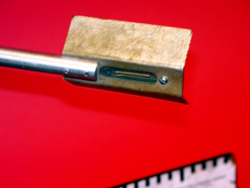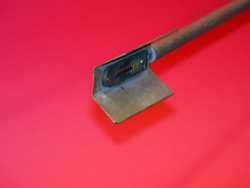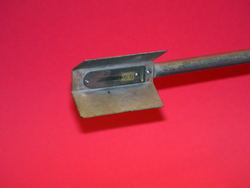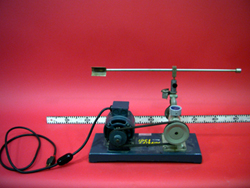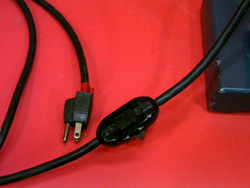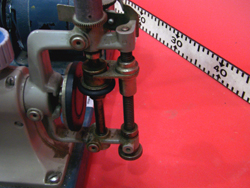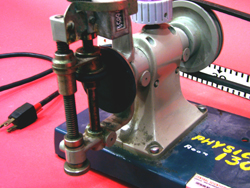Doppler Reed, 3B40.25
Topic and Concept:
Wave Motion, 3B40. Doppler Effect
Location:
Cabinet: Waves and Sound (WS)
Bay: (A4 Right)
Shelf: #1
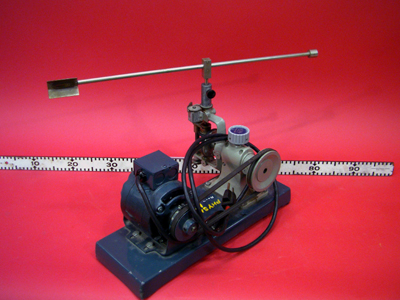
Abstract:
An adjustable speed motor rotates an arm with a reed at the end.
Equipment |
Location |
ID Number |
|
|
|
Doppler Reed |
|
Important Setup Notes:
- N/A
Setup and Procedure:
- Place apparatus on a tabletop.
- Plug in the motor.
- If desired, adjust the rotational speed of the arm by turning the clutch knob (see photo below).
- Turn the motor on by switching the power switch located on the power cord to the on position.
Cautions, Warnings, or Safety Concerns:
- N/A
Discussion:
As the reed spins around in a circle, the direction of the relative velocity with respect to the observer (the audience) is constantly changing. In terms of the component of tangential velocity in the direction of the audience, the reed has relative velocity toward the audience half of the time and away from the audience the other half. This allows us to experience "both sides" of the Doppler effect. When the reed moves toward us, the frequency appears higher than the actual frequency. Likewise, when the reed moves away, the frequency appears lower. We hear the actual frequency produced by the reed at only two points: where the tangential velocity of the reed is perpendicular to the observer's line of sight. The overall magnitude of the frequency shift depends on the speed of rotation. The higher the speed is, the larger the shift will be. The functional form of this is given by
fobserved = (c + uobserver) / (c + usource) * fsource
where u is the relative velocity of the object or person with respect to some common point of reference, and c is the speed of sound.
|
|
|
|
|
|
|
Videos:
References:
